November 16-17, 2010
To go Back at any time,
use Browser’s “Previous Page”
It is a long drive from Fez to Erfoud. That is why our guide made certain we were off to an early start --- no vacation, this! Tackling the Atlas Mountains was on our agenda early in the drive. Our first rest stop --- above 5000 feet --- was a real treat. We found ourselves, it seemed, in an alpine town with autumn colors still on the trees!
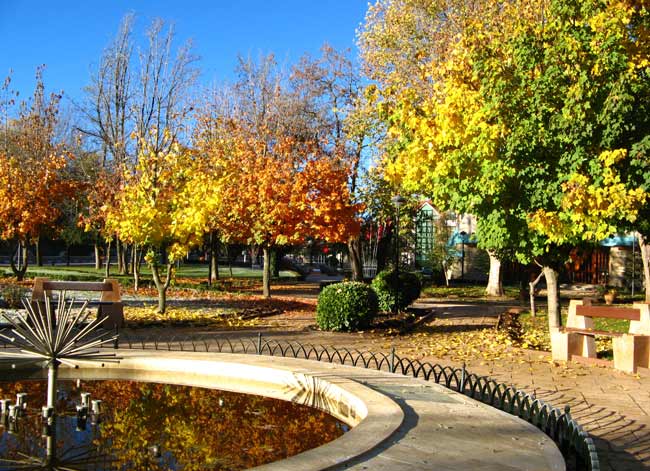
This was Ifrane, a town founded in 1929 by the French as a winter sports resort. Structures built in the 1930’s and later are totally non-Moroccan; instead, they have a pseudo-alpine look. Streets are wide and very suburban-like. This was the only place in Morocco we encountered frost:
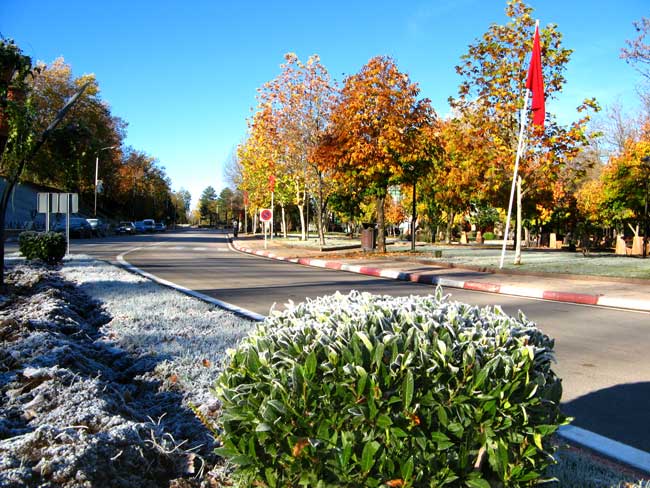
We learned there are three ski lifts near Ifrane that attract international tourists and wealthy Moroccans. In summer other opportunities bring hikers, cyclists, anglers and rock climbers. It is a pretty area and was certainly unique in our Moroccan tour; we would have enjoyed exploring it more.
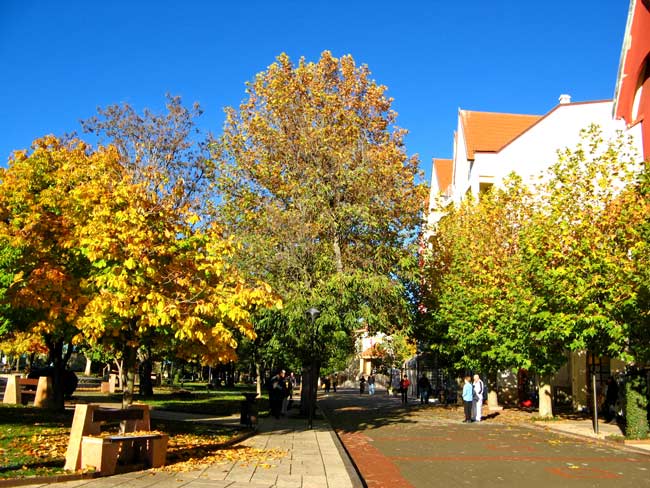
Nippy as the morning was, standing in the bright sun felt wonderful:
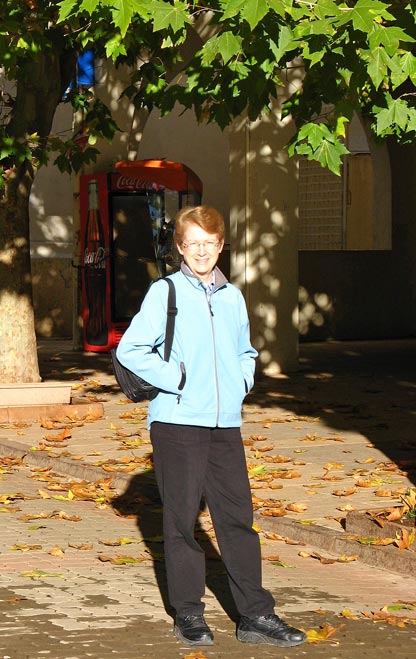
Today was our turn to sit in the front seat behind the driver. If the viewer can forgive the reflections in the photos, an appreciation will be gained for the terrain we drove through as well as for the smooth highway surface:
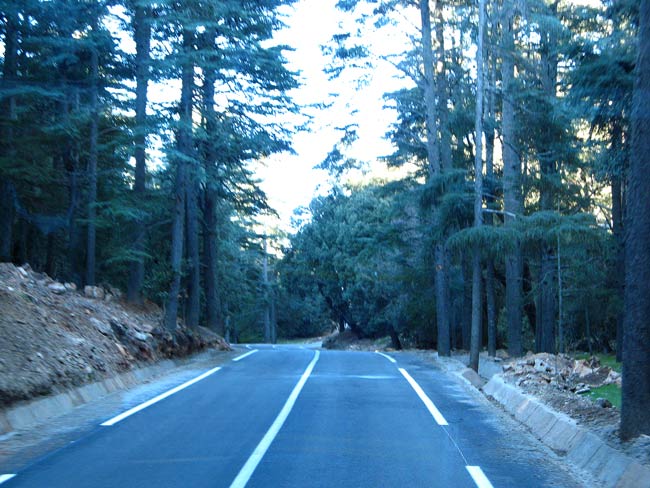
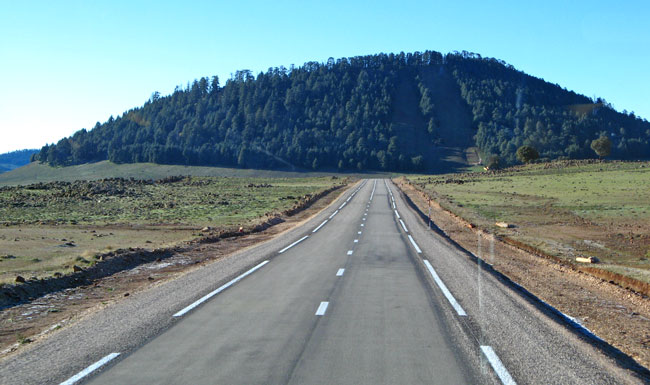
Some vistas were better photographed through the side windows:

Occasionally, the coach stood still long enough to capture details up close. In one small town, while waiting for traffic to clear, we had a front-row seat, watching lunch being prepared on a grill and in clay cooking pots called “tagines.”
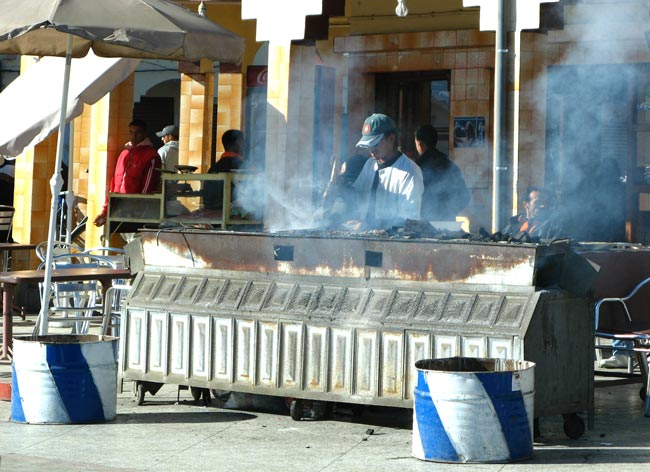
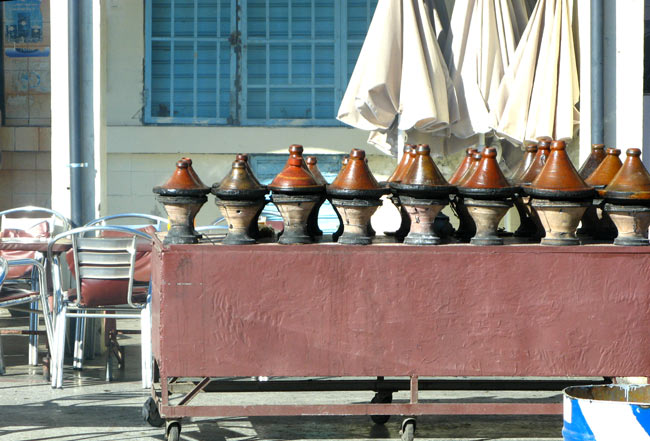
A tagine is a charcoal-fired, Moroccan-style “crock pot” for slow cooking at low temperatures --- in case you wondered.
Later, we passed a large, man-made lake on the Ziz River (created by the Hassan-Addakhil dam in 1971.) This photo shows just a segment of it:
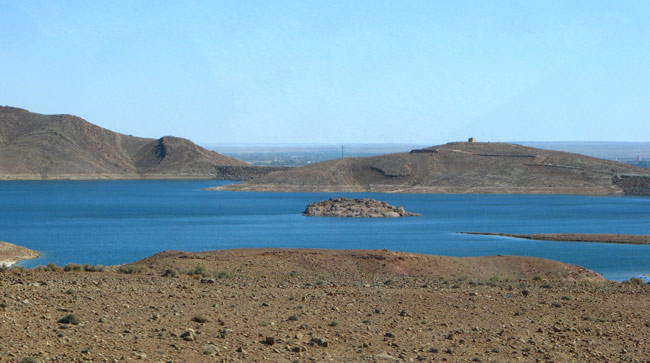
A short distance further we stopped to admire the oasis this reservoir made possible. The strip of green extended in both directions as far as the eye could see:
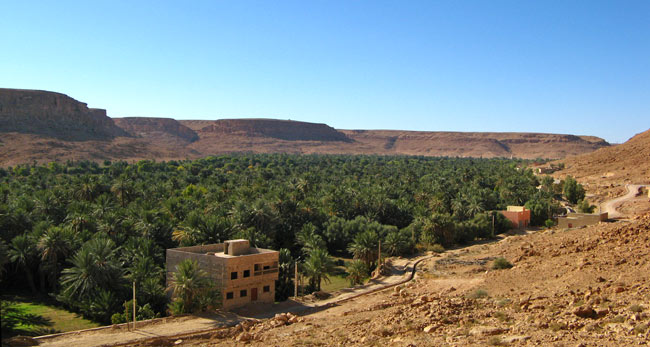
Irrigation projects like this have helped Morocco become a leading exporter of many crops, such as apples, dates, figs, olives, cherries, tomatoes, eggplant, strawberries and citrus. On the other hand, the country does need to import oil.
Eventually, we pulled up at our overnight accommodations. The Kasbah Hotel Chergui is 3 miles outside Erfoud and 30 miles from the Algerian border. The ambiance here is definitely desert. Making us feel right at home, the hotel band struck up a raucous welcome:
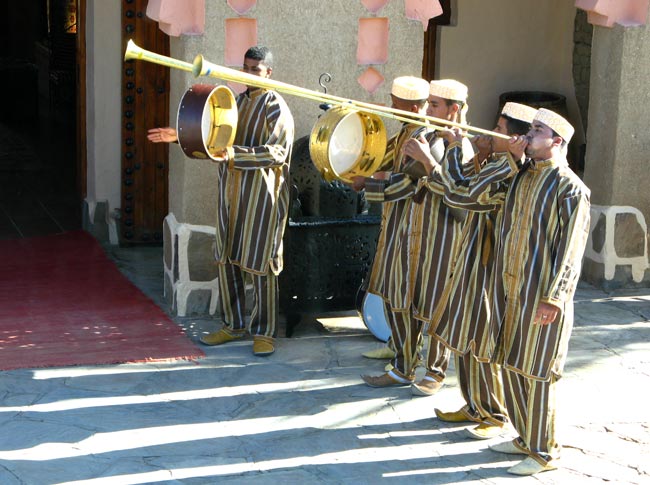
We took a shine to this place, giving it an A+ for creative design. The main courtyard features an attractive pool in the shape of the African continent:
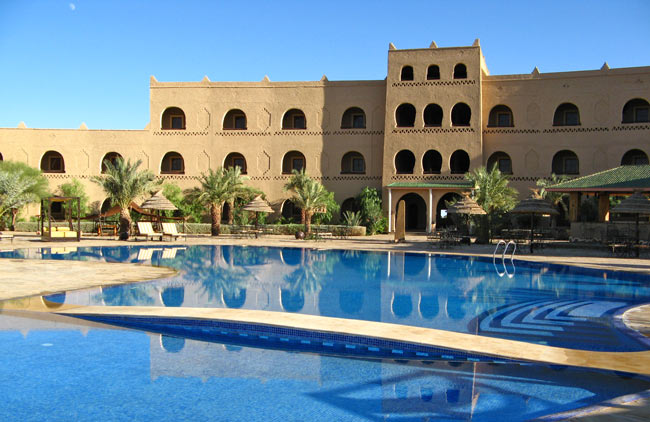
Looking back toward the main entrance, dunes are visible over the wall on the left and more can be seen to the right:
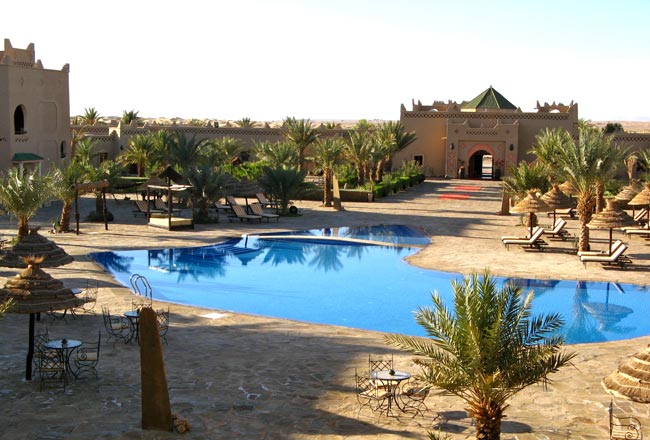
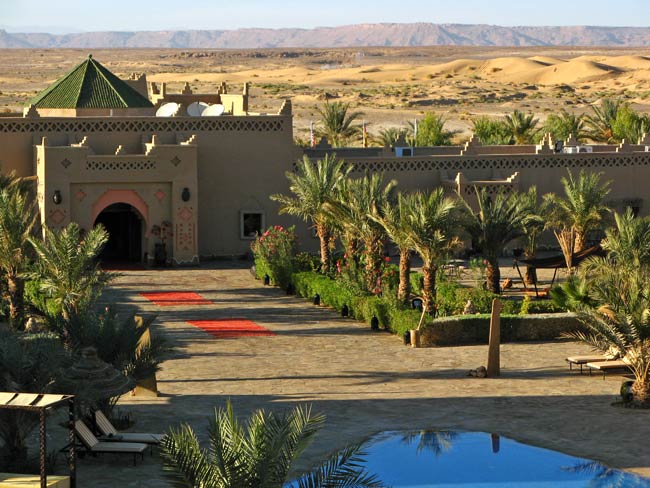
Our room --- like something out of “Arabian Nights” --- was very pleasing:
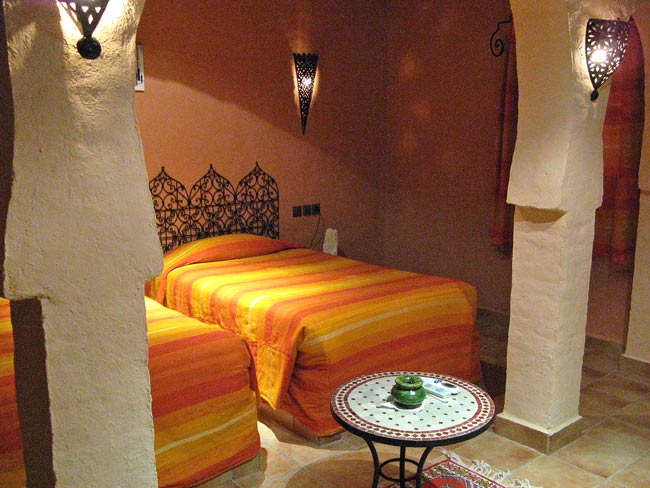
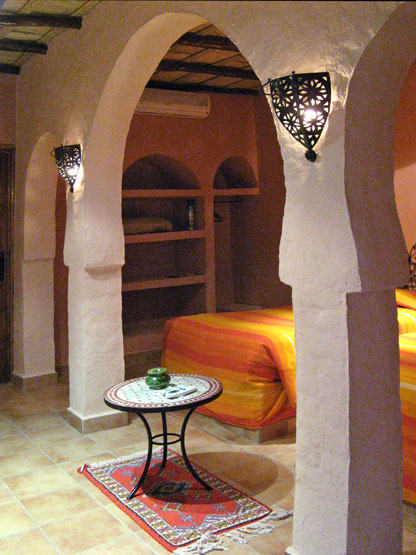
Although the cool afternoon temperature did not entice us into the pool, its peaceful surroundings did beckon us to linger awhile.
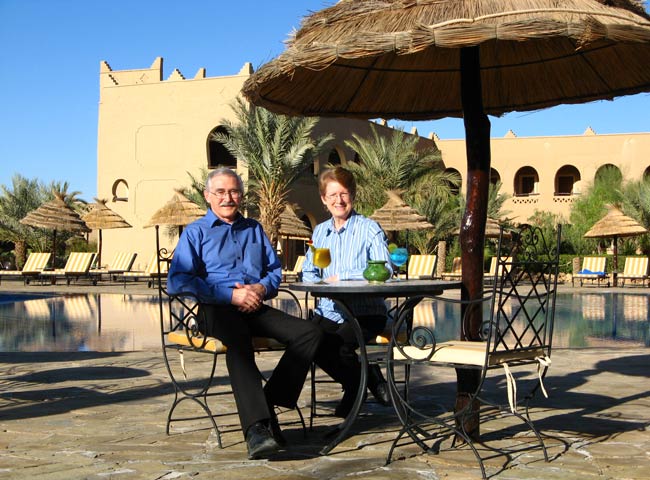
Of course, the reason it was so quiet is that the rest of our tour-mates had opted for a sidetrip to the sand dunes, leaving the place to us. Sometimes, we just need a vacation from our vacation, especially when tour guides try to cram in too many activities in one day.
Despite the imaginative effort put into this hotel --- like most we stayed in --- it could have benefited from a little more TLC. There was just enough deferred maintenance to make it noticeable. Nevertheless, all things considered, we found this hotel a charmer. After dark, it becomes even more magical:

In the gift shop, we were surprised by the presence of so many fossils for sale. Inquiring, we learned that trilobites, in particular, were very common in the sea that inundated this part of Africa eons ago. There were many beautiful specimens on display, making us wonder how widespread such fossil beds might be.
We do not know the answer to that but we did gain some advice. Anyone tempted to purchase a fossil in Morocco should first know how to differentiate between a genuine fossil and replicas of recent manufacture, cast in silicone molds.